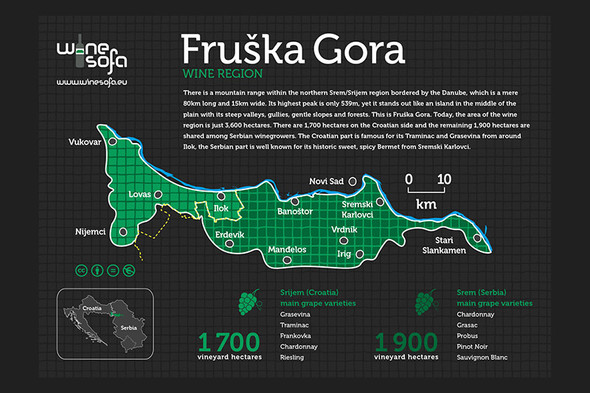A friend of mine told me some ten years ago that Fruska Gora starts in Vukovar (Croatia), at the pharmacy standing in the corner of Dr. Franje Tudmana Street and Ljudevita Gaja Street. This definition reminded me of Kafka but I loved it so much that I need to share it with others. The message is clear. Geographically speaking, the hills of Fruska Gora start ascending here only to become more prominent to the east, forcing the Danube to change its course heading south, and then they reach their heights in Serbia only to gently slope again below Sremski Karlovci stretching all the way to the south until Stari Slankamen where the Tisza meets the Danube. When listing wine-producing towns and villages with vineyards mostly facing north (to mention the major ones for easy orientation) there is Vukovar, Lovas and Ilok in Croatia, Banostor, Beocin, Sremski Kamenica and Sremski Karlovci in Serbia lying along the Danube bank (except for Sremski Karlovci where the Danube slowly turns south). On the southern side of the mountain the Croatian Nijemci and the Serbian Erdevik, Mandelos and Irig are located. As for the minerals the mountain is composed of, crystalline slates and limestone dominate but marl, loess and gritstone are also found. Volcanic rocks are mostly represented by rhyolite quartz trachyte and trachyte and acidic tuff from the seawater. The climate is continental with cooler winters and hot summers, with an annual precipitation of around 600 mm. Interestingly, (and similarly to the Hungarian Neszmély wine region) old records say, sometimes the grapes in the northern slopes ripened two weeks earlier than in the theoretically better southern slopes. The reason is the proximity of the Danube that changes the microclimate and the water reflects the light back onto the vines.
- wrote Daniel Ercsey (If you need more informations about the Fruska Gora region, click here to read our article)
Download normal or printer friendly version of poster (A3).






